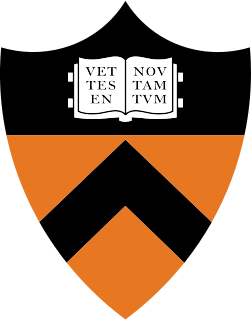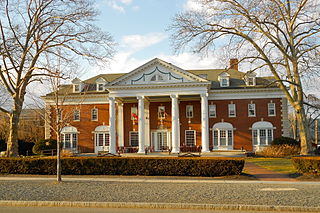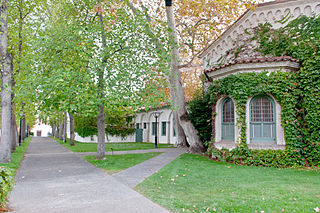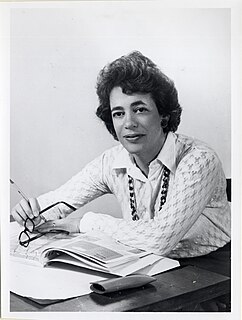Related Research Articles

Barnard College of Columbia University is a private women's liberal arts college located in the borough of Manhattan in New York City. It was founded in 1889 by a group of women led by young student activist Annie Nathan Meyer, who petitioned Columbia University’s trustees to create an affiliated college named after Columbia’s recently deceased 10th president, Frederick A.P. Barnard.

Princeton University is a private Ivy League research university in Princeton, New Jersey. Founded in 1746 in Elizabeth as the College of New Jersey, Princeton is the fourth-oldest institution of higher education in the United States and one of the nine colonial colleges chartered before the American Revolution. The institution moved to Newark in 1747, and then to the current site nine years later. It officially became a university in 1896 and was subsequently renamed Princeton University. Princeton is often ranked among the best and most prestigious universities in the world.

Yale College is the undergraduate college of Yale University. Founded in 1701, it is the original school of the university. Although other Yale schools were founded as early as 1810, all of Yale was officially known as Yale College until 1887, when its schools were confederated and the institution was renamed Yale University. It is ranked as one of the top colleges in the United States.
The Seven Sisters refers to seven highly selective liberal arts colleges in the Northeastern United States that are historically women's colleges: Barnard College, Bryn Mawr College, Mount Holyoke College, Smith College, and Wellesley College are still historically women's colleges. Vassar College is currently a coeducational college and Radcliffe College was absorbed in 1999 by Harvard College.

The American Whig–Cliosophic Society (Whig-Clio) is a political, literary, and debating society at Princeton University and the oldest debate union in the United States. Its precursors, the American Whig Society and the Cliosophic Society, were founded at Princeton in 1769 and 1765 by James Madison, William Paterson, Oliver Ellsworth, and Aaron Burr.

Mixed-sex education, also known as mixed-gender education, co-education, or coeducation, is a system of education where males and females are educated together. Whereas single-sex education was more common up to the 19th century, mixed-sex education has since become standard in many cultures, particularly in Western countries. Single-sex education, however, remains prevalent in many Muslim countries. The relative merits of both systems have been the subject of debate.

The Princeton Quadrangle Club, often abbreviated to "Quad", is one of the eleven eating clubs at Princeton University that remain open. Located at 33 Prospect Avenue, the club is currently "sign-in," meaning it permits any second semester sophomore, junior or senior to join. The club's tradition of openness is demonstrated as far back as 1970, when Quadrangle became one of the first coeducational eating clubs.

Bunkyo University is a private university located in Shinagawa, Tokyo, Japan, with campuses in Saitama and Kanagawa Prefecture.

Colonial Club is one of the eleven current eating clubs of Princeton University in Princeton, New Jersey, United States. Founded in 1891, it is the fifth oldest of the clubs. It is located on 40 Prospect Avenue.

The Daily Princetonian, originally known as The Princetonian and nicknamed the 'Prince', is the independent daily student newspaper of Princeton University.

Evelyn College for Women, often shortened to Evelyn College, was the coordinate women's college of Princeton University in Princeton, New Jersey between 1887 and 1897. It was the first women's college in the State of New Jersey.
The following is a timeline of women's colleges in the United States. These are institutions of higher education in the United States whose student population comprises exclusively, or almost exclusively, women. They are often liberal arts colleges. There are approximately 35 active women's colleges in the U.S. as of 2021.

Women's colleges in the Southern United States refers to undergraduate, bachelor's degree–granting institutions, often liberal arts colleges, whose student populations consist exclusively or almost exclusively of women, located in the Southern United States. Many started first as girls' seminaries or academies. Salem College is the oldest female educational institution in the South and Wesleyan College is the first that was established specifically as a college for women, closely followed by Judson College in 1838. Some schools, such as Salem College, offer coeducational courses at the graduate level.

Women's colleges in the United States are private single-sex U.S. institutions of higher education that only admit female students. They are often liberal arts colleges. There were approximately 31 active women's colleges in the United States in 2018, down from a peak of 281 such colleges in the 1960s.

Randolph College is a private liberal arts and sciences college in Lynchburg, Virginia. Founded in 1891 as Randolph-Macon Woman's College, it was renamed on July 1, 2007, when it became coeducational.
Princeton University was founded in Elizabeth, New Jersey, in 1746 as the College of New Jersey, shortly before moving into the newly built Nassau Hall in Princeton. In 1783, for about four months Nassau Hall hosted the United States Congress, and many of the students went on to become leaders of the young republic.

The eating clubs at Princeton University are private institutions resembling both dining halls and social houses, where the majority of Princeton upperclassmen eat their meals. Each eating club occupies a large mansion on Prospect Avenue, one of the main roads that runs through the Princeton campus, with the exception of Terrace Club which is just around the corner on Washington Road. This area is known to students colloquially as "The Street". Princeton's eating clubs are the primary setting in F. Scott Fitzgerald's 1920 debut novel, This Side of Paradise, and the clubs appeared prominently in the 2004 novel The Rule of Four.
Thomas More College was a coeducational, undergraduate college of liberal arts and sciences that was open from the fall of 1964 until it merged with Fordham College at Rose Hill in 1974. It offered arts and science programs for women as well as programs, such as drama, for men that were unavailable at Fordham University, which, at that time, only admitted men into its undergraduate programs. While the undergraduate school of Fordham University only admitted men, many of Fordham's graduate schools, such as the School of Education, Graduate School of Arts and Sciences, Law School, College of Pharmacy and School of Social Service were coeducational. Thomas More College, however, provided women the opportunity to earn an undergraduate liberal arts degree.

Elga Ruth Wasserman guided the transformation of Yale College from an all-male undergraduate college into a coeducational institution. She held the newly created position of special assistant to the president of Yale University on the education of women (1968–1972). She became a proponent of equal rights for women during Second-wave feminism and after. Later, Wasserman practiced law, specializing in family law, and advocated policies friendly to women and minorities in the workplace. She wrote The Door in the Dream, highlighting eminent female scientists through interviews and discussion.
Sally Frank sued the three all-male eating clubs at Princeton University in 1978 for denying her on the basis of her gender. Over ten years later, in 1990 the eating clubs were defined as "public accommodation" and court ordered to become co-ed thanks to Sally Frank, her attorney Nadine Taub and the Women's Rights Litigation Clinic of Rutgers Law School. The eating clubs argued that they were completely private and separate from the university, giving them the right to sex discrimination. After many rounds in the courts, this argument eventually failed. The winning argument stated that the clubs were in fact not separate, and instead functioned as an arm of the university itself. This meant that the clubs were in the end covered by New Jersey's anti-discrimination law and forced to admit women.
References
- ↑ "Goheen: 'Coeducation Is Inevitable'", The Daily Princetonian, 17 May 1967. Retrieved 14 June 2012.
- ↑ "Princeton told to expect coeds". The New York Times. 17 May 1967. Retrieved 19 May 2012.
- 1 2 Natalie Zemon Davis; Stephen Ferguson; Anthony T. Grafton; Linda Lierheimer; Carol Quillen; Patricia Schechter (1990). Gender in the Academy. Princeton University Library.
- ↑ "Princeton Eating Club Loses Bid to Continue Ban on Women", The Los Angeles Times, Associated Press, p. A4, January 23, 1991
- ↑ "Princeton song goes coed", The New York Times, 1987-03-01
- ↑ "Presidential committee makes recommendations to strengthen student leadership".
- 1 2 "College Admits Women to New Defense Course". Daily Princetonian. May 30, 1942. Retrieved May 19, 2012.[ permanent dead link ]
- 1 2 3 4 She Flourishes - Chapters in the History of Princeton Women, an exhibit at Princeton University with content taken from Historical Subject Files, Campus Life. 2012.
- 1 2 "Ten Girls Among 35 Applicants for Language Program Posts". The Daily Princetonian. 88 (49). 20 April 1964.
- ↑ ""Critters" Apply for Transfers". The Daily Princetonian. 93 (57). 29 April 1969.
- ↑ "CL Girls, no longer rarities, still prefer Old Nassau". The Daily Princetonian. 93 (72). 21 June 1969.
- ↑ "Faculty appointments include 13 newcomers, 3 promotions" . Retrieved 20 February 2013.